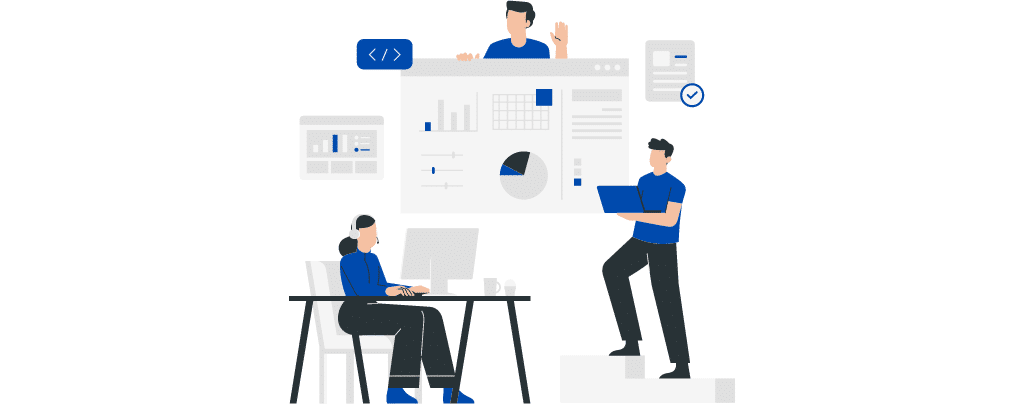
Website CRO Checklist
Conversion Rate Optimization (CRO) is the process of increasing the percentage of website visitors who take a desired action. For example, ordering a product or filling out a form on a website. To increase your website’s conversion rate, you will need to generate experiments and analyze results. Here are five steps to follow to help you optimize website conversions and increase your conversion rate:
1. Start with research

Understanding your users’ behaviour and intent is arguably the most important step to optimize website conversions. Check out the funnel in Google Analytics. For example, find out what site pages get visited most and if there are certain pages that a lot of users drop off from.
Using heatmaps can help you determine what does and does not work on your website. Microsoft Clarity and Hotjar are great for telling you where website users click, where they scroll, and what is or is not looked at. It will tell you whether users are clicking on deadlinks, broken links, or whether people are rage-clicking on elements. For example, if you have a tourism website and you want people to book tours, but the “Book Now” button does not work, you are likely to be losing a lot of conversions.
2. Don’t forget about technical improvements

Your website’s load speed is one of the most important metrics to review when optimizing your website conversion rate. A slow-loading website can drive potential customers away because they will leave if a page takes too long to load. So, if people are leaving before your site even loads, you can imagine the impact this has on your conversion rate! You can use tools like Google’s PageSpeed Insights to test your website’s speed and get recommendations for improvement.
In the backend of your site, you should be:
- Optimizing the size of images on your website (a WordPress plugin you can use for this is WP Smush)
- Reducing the number of redirects and fixing broken links
- Deleting unused plugins
- Enabling browser caching
Another technical improvement is to ensure your site is mobile-responsive. Who stays on a site that has half of the text missing? You can check your site’s mobile friendliness score in Google Search Console.
3. Define your conversion event

Be clear on what you’re trying to achieve with your conversions. For example:
- Demo requests
- Free sign-ups
- Purchases
- Newsletter signups
Once you’ve decided which conversion event you’d like to test, get started on your A/B tests. A/B testing allows you to compare two versions of a web page to see which one performs better. This can help you identify which design elements, such as colours, images, and layout, are most effective at converting visitors into customers.
One of the most impactful tests that you can run is on your call to action. Your call to action (CTA) is the button or link that tells visitors what to do next, such as “Sign Up Now”, “Buy Now”, or “Checkout”. Make sure your CTAs are specific, visible, and encouraging for people to take action. Our team has run CTA tests for our clients and one successful test for a tourism client found that “Book Your Tour” increased the conversion rate by 14% compared to the original “Get Tickets”.
4. Triple check everything is set up properly

When you have made any changes to your site, you want to make sure you manually check that everything works. If you are using Google Optimize for A/B tests, note that it can be glitchy sometimes, so triple check everything works.
Preview desktop and mobile because if you set up an experiment that is glitchy, your results will be skewed and incorrect.
5. Analyze your results

Finally, it’s important to regularly monitor and analyze the results of your CRO testing. Use tools like Google Analytics to track your conversion rates and identify areas for improvement. By regularly analyzing your results, you can continue to improve your website and increase your website conversion rates over time.
This list is a great place to start, however, there are many other tips and tactics you can use to optimize website conversions. One of the best Conversion Rate Optimization pieces of advice is to never stop the process of experimentation!
Do you want to see how 1UP can help with conversion rate optimization? Don’t have time to implement these changes? Contact us today and be impressed with the results!
